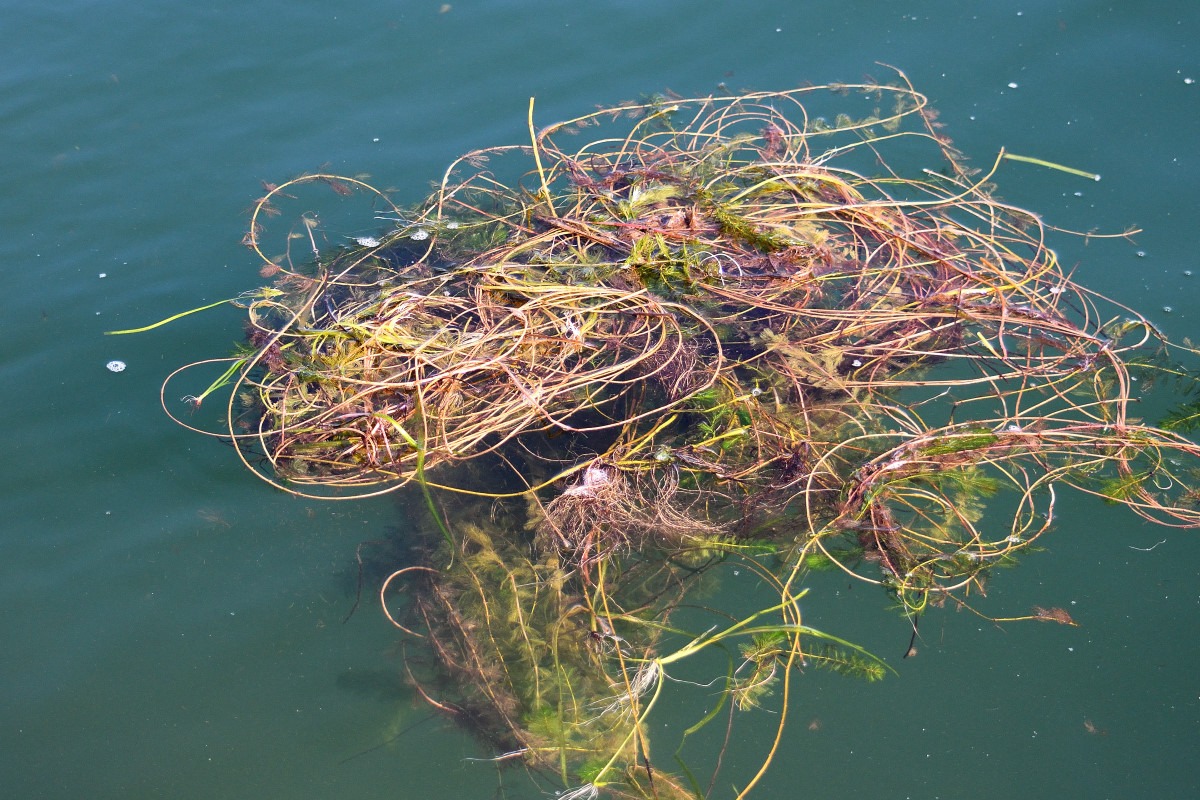In an ongoing process, renewing Clark Lake’s fight against invasive weeds cleared another hurdle. The Columbia Township board voted to hold a second public hearing in April, a positive step to continuing the program. The weed treatment program has been in effect for the last seven years, and is due to be extended. The program targets only the virulent invasive species that can quickly get out of control, but does not affect native plants. At the first public hearing on Monday, February 21, residents spoke about the program.
Here’s a summary of how this program started, and why it’s still needed. In 2014 Clark Lakers were alarmed as weeds took over large sections of the lake. One resident described it as “an Amazon jungle lurking an inch below the surface.” A raft ride in some areas might be delayed two or three times to clear the prop of weeds. Mounds of weeds were floating from one area of the lake to another.
 A couple Clark Lake volunteers took action by sending out samples to be analyzed. The verdict? Clark Lake was under attack by hybrid Eurasian water milfoil (HEWM). Concerned residents formed the Invasive Species Committee. Thorough research revealed a potentially scary scenario. A small cutting of this invasive weed can multiply exponentially. They found lakes that didn’t take action paid a price. Invasive weeds diminished boating, fishing, destroyed natural habitat, and property values decreased in some situations.
A couple Clark Lake volunteers took action by sending out samples to be analyzed. The verdict? Clark Lake was under attack by hybrid Eurasian water milfoil (HEWM). Concerned residents formed the Invasive Species Committee. Thorough research revealed a potentially scary scenario. A small cutting of this invasive weed can multiply exponentially. They found lakes that didn’t take action paid a price. Invasive weeds diminished boating, fishing, destroyed natural habitat, and property values decreased in some situations.
What was the solution? Forming a special assessment district (SAD) would allow full lake treatment and cover costs. Committee members took on a huge task, going door to door and reaching 70% of lakefront owners. They found strong support—95% signed the petition to form the SAD.
Early treatment efforts achieved moderate success. But 2019’s full lake treatment was a game changer, wiping out the hybrid Eurasian water milfoil. Then, last summer, the invader began to reappear, perhaps not a surprise given the number of boats visiting from infected lakes.

Over the last couple years, a new threat arrived—starry stonewort. This algae mimics a native weed, but can become very aggressive. It can grow to heights of 7 feet and be so dense that no person or fish could move through it. Some nearby lakes are grappling with out-of-control attacks. At Clark Lake, it has been treated at Eagle Point and in the area around the County Park.
A reasonable question is “when will it end?” Perhaps never. Current strains are reintroduced by visiting boats, new strains can combine with existing native or hybrid plants, and a new threat could materialize at any moment. So, vigilance and control offer a proper defense.
Another question regards responsibility. Shouldn’t others who use the lake be required to take precautions or help pay for the treatment? In the best of worlds, yes. Yet, as you look at the problem through a pragmatic lens, you quickly find unbelievable complications. Another question provides its own answer. What kind of result do lakefront property owners desire? A lake with weeds under control or a lake facing an out of control nightmare?
The Clark Lake Spirit Foundation and the Invasive Species Committee are comprised of fellow Clark Lake residents. Both have told the Township they support the renewal of the SAD.
The cost of the expiring program is $64 per year for each lakefront property owner. The new term reduces that amount to $60. A bargain, considering the effective results achieved.










